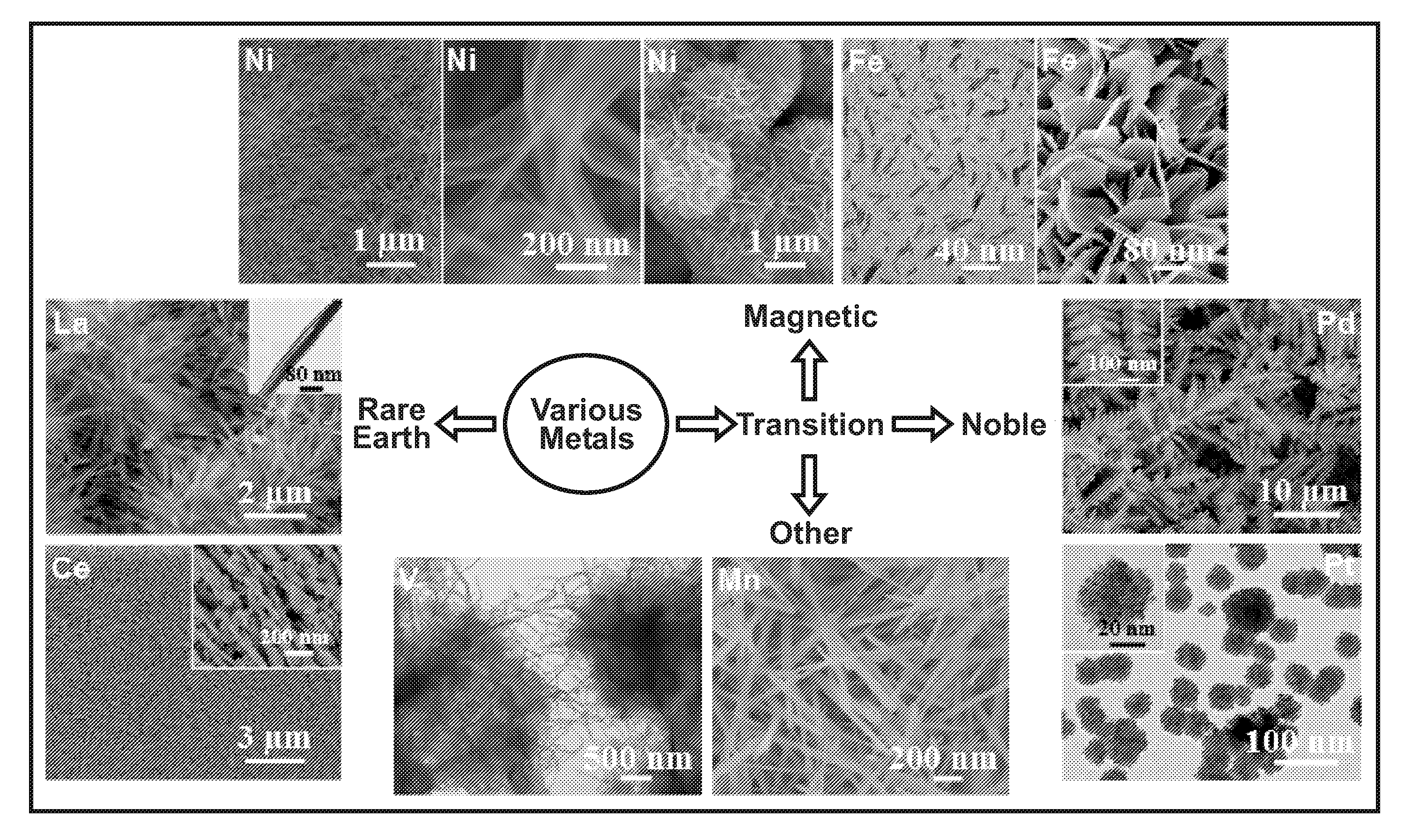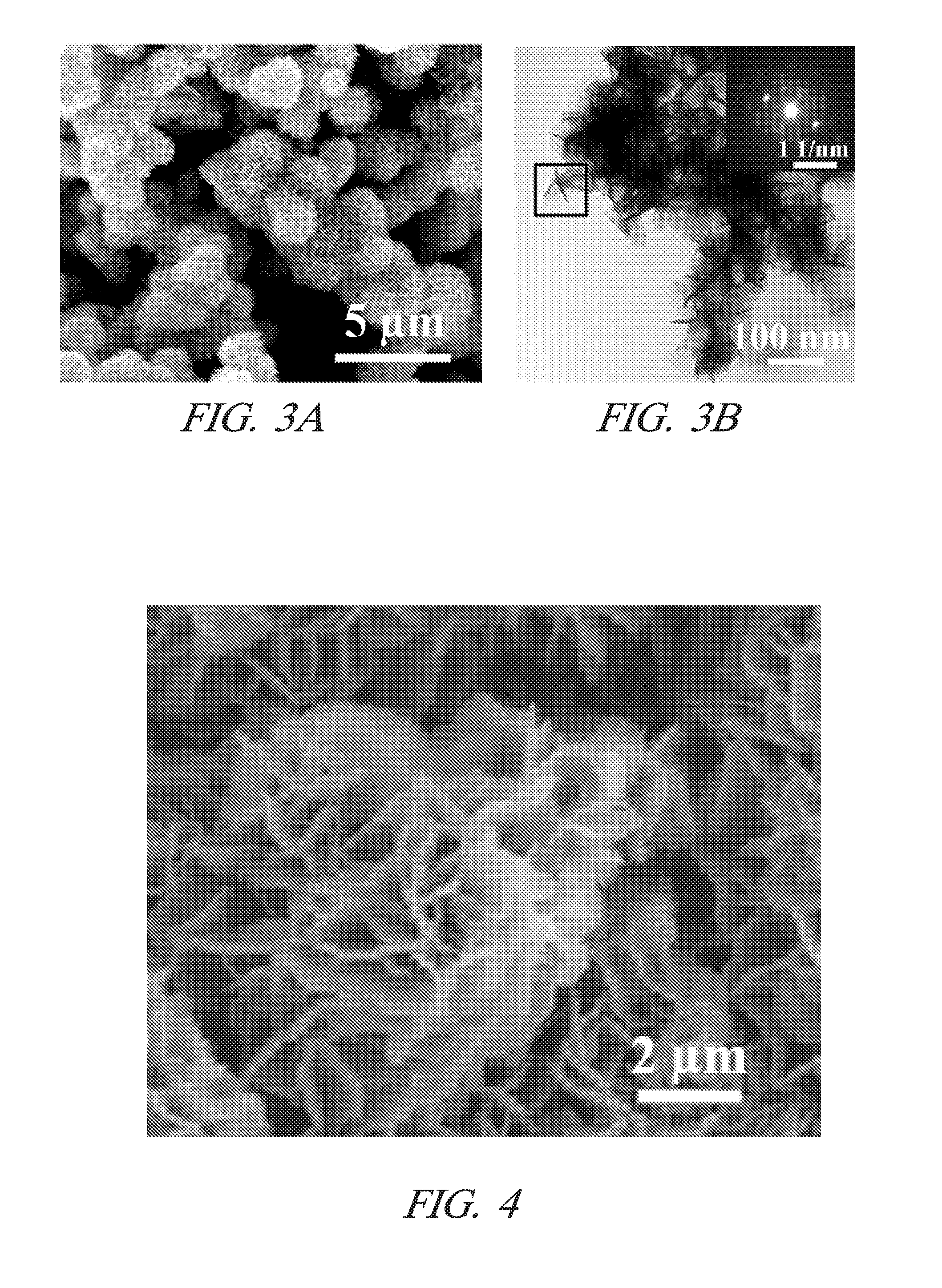Making metal and bimetal nanostructures with controlled morphology
a nanostructure and metal technology, applied in metal-working apparatuses, transportation and packaging, etc., can solve the problems of low yield, high cost, complicated process, etc., and achieve the effect of high reduction potential, cost-effective, and easy large-volume production of nanomaterials
- Summary
- Abstract
- Description
- Claims
- Application Information
AI Technical Summary
Benefits of technology
Problems solved by technology
Method used
Image
Examples
Embodiment Construction
[0023]One embodiment includes a method of making metal nanostructures having a nanometer size (about 100 nm or less) in at least one dimension. The method involves the systematic control of the dimensions and shapes of metal nanostructures. The method includes preparing an aqueous solution including a cation of a first metal(s) and an anion. A quality of water is used that does not interfere with the practice of the process, for example deionized water. Then commercial powder particles of an elemental second metal having a greater reduction potential than the first metal are mixed with the aqueous solution in an amount that dissolves all of the second metal and precipitates the first metal as metal nanostructures. For example, the commercial powder particles may be, but are not limited to, aluminum (99.5% purity), magnesium (99.6% purity), or manganese (>99% purity). The powder particles suitably may be micrometer size, for example between 1 and 100 micrometers or larger. In other e...
PUM
| Property | Measurement | Unit |
|---|---|---|
| Length | aaaaa | aaaaa |
| Particle size | aaaaa | aaaaa |
| Temperature | aaaaa | aaaaa |
Abstract
Description
Claims
Application Information
 Login to View More
Login to View More - R&D
- Intellectual Property
- Life Sciences
- Materials
- Tech Scout
- Unparalleled Data Quality
- Higher Quality Content
- 60% Fewer Hallucinations
Browse by: Latest US Patents, China's latest patents, Technical Efficacy Thesaurus, Application Domain, Technology Topic, Popular Technical Reports.
© 2025 PatSnap. All rights reserved.Legal|Privacy policy|Modern Slavery Act Transparency Statement|Sitemap|About US| Contact US: help@patsnap.com



